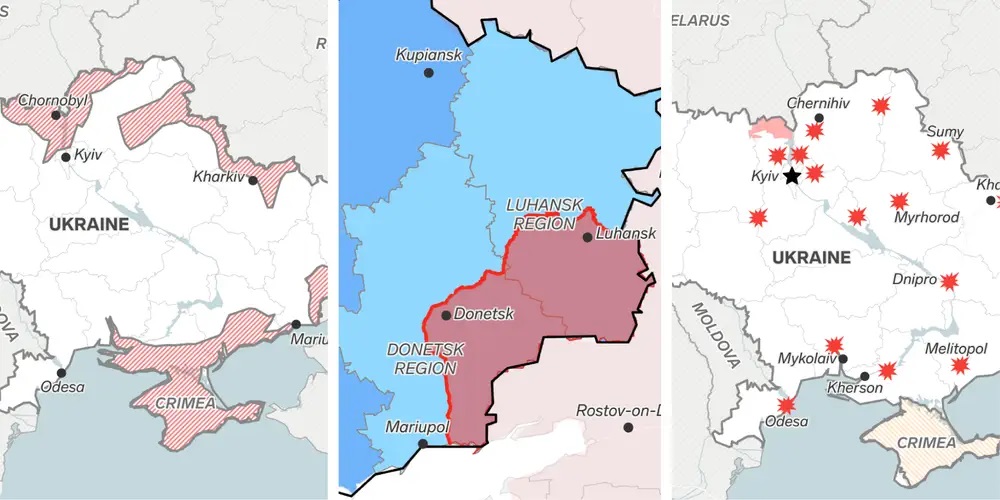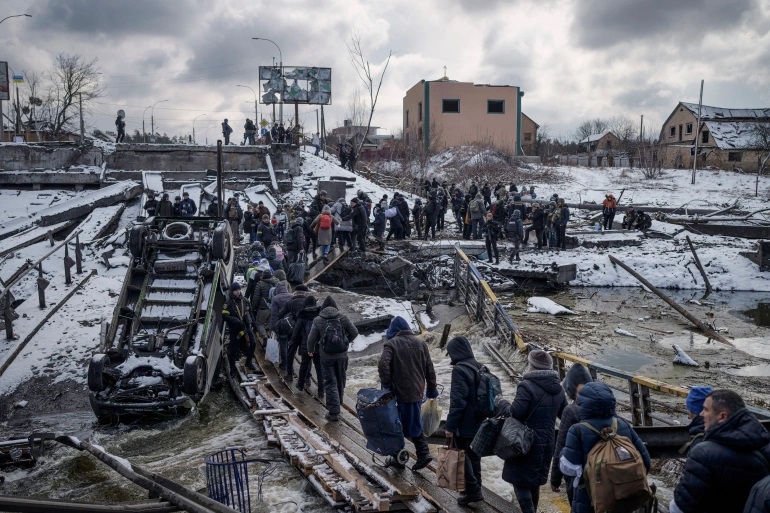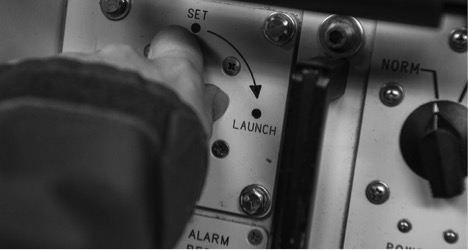 To most people, whether or not a ruler or country “uses” nuclear weapons is a simple choice between either dropping them on the enemy or not doing so. For “experts,” though, things are much more complicated (after all making them so, or making them appear to be so, is the way they earn their daily bread). So today I am going to assume the mantle of an expert and explain some of the things “using” such a weapons might mean.
To most people, whether or not a ruler or country “uses” nuclear weapons is a simple choice between either dropping them on the enemy or not doing so. For “experts,” though, things are much more complicated (after all making them so, or making them appear to be so, is the way they earn their daily bread). So today I am going to assume the mantle of an expert and explain some of the things “using” such a weapons might mean.
- Making verbal threats. Almost eight decades have passed since the first nuclear weapon was dropped on Hiroshima (without any kind of warning, nota bene). Since then there have been plenty of occasions when countries, statesmen and politicians threatened to use the nukes at their disposal: Eisenhower in 1953 in connection with the Koran War, Khrushchev in 1956 in connection with the Suez Crisis, Kennedy in 1962 in connection with the Cuban Missile Crisis, Nixon in 1973 in connection with the Arab-Israeli War of that year, India and Pakistan in 1998 in connection with the Kargil War, and so on right down to Putin today. Some of the threats have been overt and rather brutal, others more or less veiled. Some were delivered directly, others with the help of a third party.
- To put some muscle behind the threat, weapons may be moved out of storage and put on display. Normally everything pertaining to nukes is kept highly secret. Here and there, though, countries have allowed their nuclear warheads, or replicas of them, to be shown, photographed, and celebrated for what they might do to opponents. In particular Russia, China and North Korea like to parade their intercontinental ballistic missiles. True monsters they are, any one of which can demolish almost any city on earth within, say, less than an hour of the order being given. Some such displays are accompanied by verbal threats, others not. At times the sequence is reversed in the sense that display precedes threats rather than the other way around.
- Raising the state of alarm. Again contrary to what most people think, putting nuclear weapons to use, in other words commanding and controlling them, is by no means simply a matter of pushing the proverbial button. First, those in charge of the weapons must make sure they are always ready to be launched at a moment’s notice. Second, they must make sure the weapons are not launched by accident, or by unauthorized personnel, or by an authorized person either deliberately disobeying orders or going out of his or her mind. The two requirements, speed (lest the weapons are targeted and destroyed before they can be launched) and reliability contradict each other; making the problem of nuclear command and control as difficult as any we humans have to face. Raising the state of alarm will cut through some parts of the problem—though just how, and to what extent, is rightly kept one of the most guarded secrets of all.
- Going a step further, weapons and delivery vehicles may be tested. Pace any number of computer models and exercises, ultimately the only way to make sure one’s nuclear weapons will work is to test them. Such tests, of course, may also be used in an attempt to influence the enemy’s behavior—as was notoriously the case when India and Pakistan both tested a number of weapons back in 1998. Some tests may be conducted in or over some outlying part of one’s own country as American, Soviet, British, French, Chinese, Indian, Pakistani and North Korea ones all were. Others may take place over some part of the vast no-man’s world that constitutes the earth’s oceans; for example, the Israeli-South African bomb said to have been detonated over the Indian Ocean back in 1979. It is also possible to send some of one’s missiles hurtling over enemy country, as North Korea has often done in respect to Japan.
Each of the above mentioned methods represents a different way of (hopefully) “using” one’s nuclear weapons in order to influence the enemy’s behavior without bringing about Armageddon. Historically all have been implemented quite often, some even as a matter of routine. The problem is that, since no country or leader has ever admitted giving way to a nuclear threat, it is hard to say how effective such threats were.
There are, however, additional ways states might put their nuclear weapons to use.
- Launching a limited nuclear strike at some less important enemy target such as outlying, more or less unpopulated, spaces or else a ship at sea. All in the hope of scaring the opponents to the point where he’ll give way to one’s demand, but without risking a nuclear response.
- Launching a limited nuclear strike at the enemy’s nuclear or, in case he does not have them, conventional forces. Targets might consist of early warning installations, anti-aircraft and missile defenses, troop-concentrations, communication centers, depots, etc.
- Launching a limited nuclear strike at the enemy’s industrial infrastructure.
- Launching a nuclear strike at all of the targets mentioned in bullets 5 to 7.
- Launching a full scale nuclear strike at the enemy’s main demographic centers.
One well known nuclear strategist, Herman Kahn, in his 1962 book distinguished among no fewer than forty different stages on the “escalation ladder.” In practice, there are two reasons why the ladder is largely theoretical. First, the various stages are likely to be hard to keep apart. Second, even if the side using the weapons does keep them apart in his own mind, the other is highly unlikely to share his views. In particular, a strike that one side sees as relatively harmless may very well be perceived by the other as a mortal blow or something close to it, thus bringing about the very retaliation he seeks to avoid.
As far as publicly available sources allow the rest of us to judge, up to the present Putin has limited himself to the first of these nine stages. That is less–considerably less–than some others have done before him. Still day by day his chances of winning” this war seem to dwindle. So the question is, will he stop there?

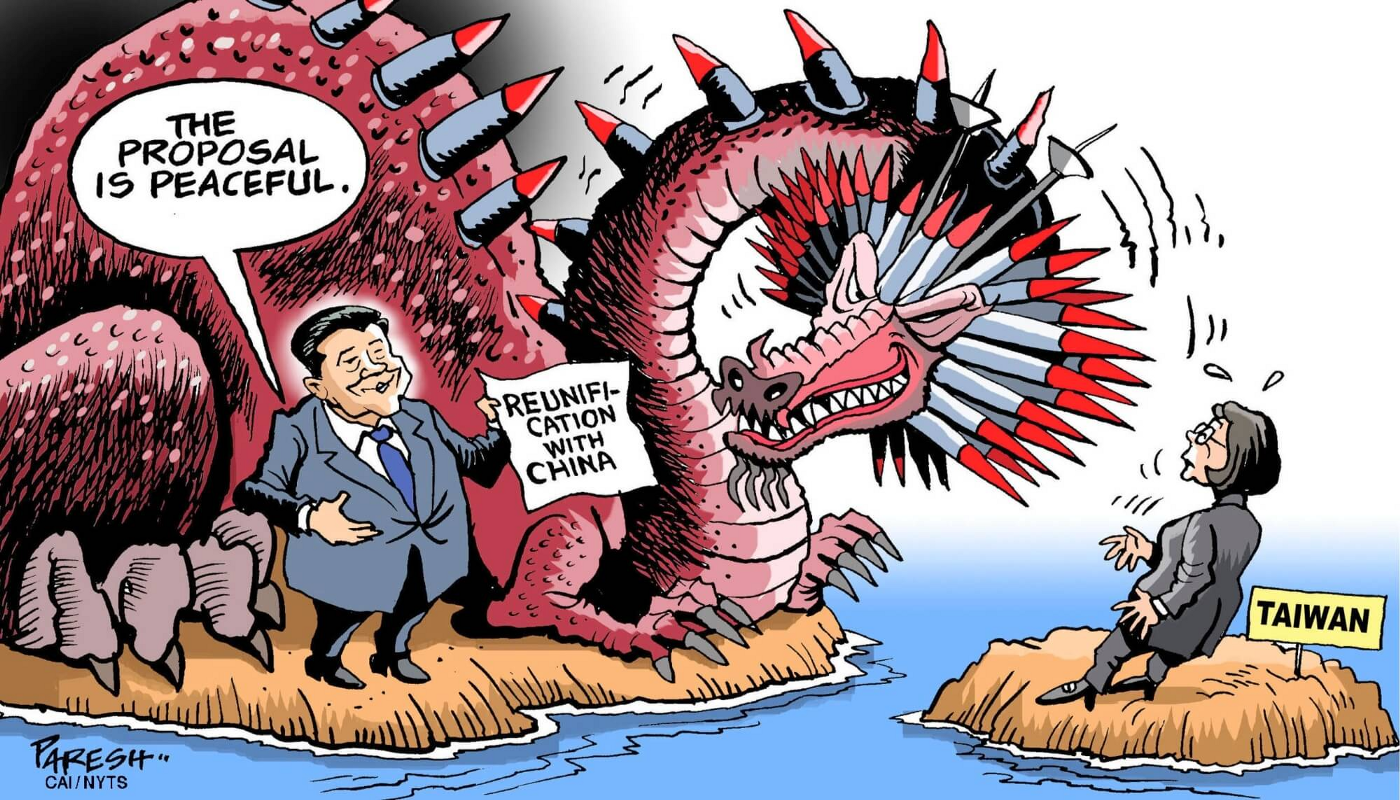 When a dictatorship is in trouble, ten to one that it will seek a way out in the form of war. Judging by China’s increasingly bellicose behavior in respect to Taiwan over the last few weeks, its dictatorship—and, yes, a dictatorship it is—ten to one that it is in deep trouble indeed. Consider:
When a dictatorship is in trouble, ten to one that it will seek a way out in the form of war. Judging by China’s increasingly bellicose behavior in respect to Taiwan over the last few weeks, its dictatorship—and, yes, a dictatorship it is—ten to one that it is in deep trouble indeed. Consider:

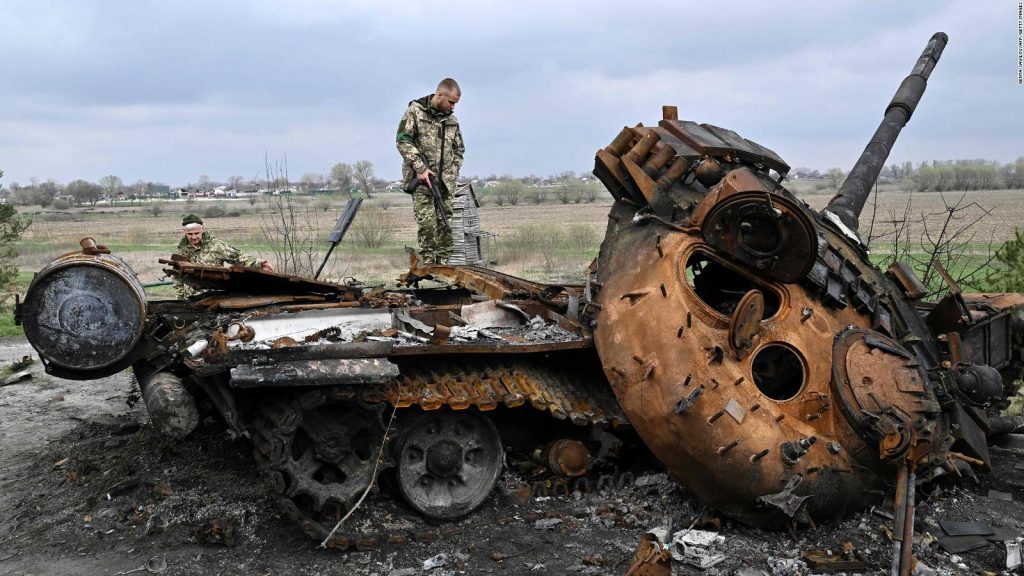 Now that the initial momentum has been spent and replaced by attrition (on both sides), it is possible to speculate about the outcome of the war everyone has been talking about for the last few months.
Now that the initial momentum has been spent and replaced by attrition (on both sides), it is possible to speculate about the outcome of the war everyone has been talking about for the last few months.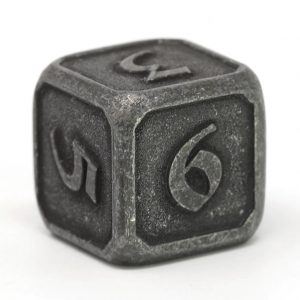
 As others beside me have noted, one of the most astonishing things about the war in Ukraine is the fact that cyberwarfare does not seem to be playing a major role in it. To be sure, there has been what one source calls “a steady drumbeat of attacks, including disinformation campaigns, distributed denial-of-service attacks that temporarily knock websites offline, and ‘wiper’ attacks, which infect computer networks and render them inoperable by deleting all files. But no question of malware taking the place of bullets, shells, rockets missiles and bombs, small and large. No talk of countrywide water, gas, electricity, communication and transportation systems being knocked out by all kinds of oddly-named devices used by either side. Instead, old-fashioned kinetic warfare seems to be not only alive but kicking out ferociously in every direction at once. Just take a look at images filled with wrecked Russian tanks, or, on the other side, some photographs of what much of Mariupol now looks like.
As others beside me have noted, one of the most astonishing things about the war in Ukraine is the fact that cyberwarfare does not seem to be playing a major role in it. To be sure, there has been what one source calls “a steady drumbeat of attacks, including disinformation campaigns, distributed denial-of-service attacks that temporarily knock websites offline, and ‘wiper’ attacks, which infect computer networks and render them inoperable by deleting all files. But no question of malware taking the place of bullets, shells, rockets missiles and bombs, small and large. No talk of countrywide water, gas, electricity, communication and transportation systems being knocked out by all kinds of oddly-named devices used by either side. Instead, old-fashioned kinetic warfare seems to be not only alive but kicking out ferociously in every direction at once. Just take a look at images filled with wrecked Russian tanks, or, on the other side, some photographs of what much of Mariupol now looks like.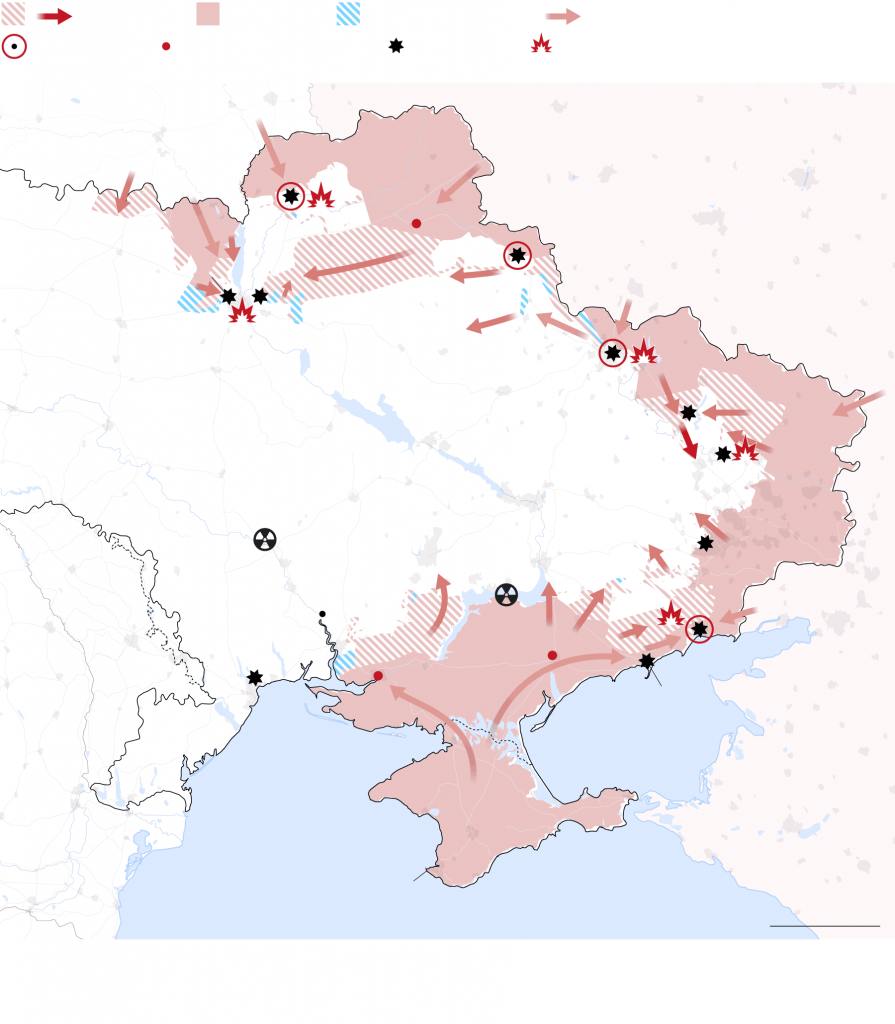 First, a disclaimer. President Putin has neither been whispering in my ear nor appearing in my dreams. Nor did his advisers, senior or junior, civilian or military, official or unofficial. Nor, on the other hand, do I necessarily trust any of the usual sources mentioned by Western media. Meaning, their own countries’ intelligence services, the reports of their journalists and cameramen on the ground, tales told by Ukrainian soldiers, tales told by local Ukrainians, tales allegedly originating in Russian POWs, and so on. All these different sources, and many others besides, have their limits. Many also have an ax to grind: either to deny Russian atrocities or to emphasize them as much as possible. It is as people say. In war, any war without exception, the first casualty is the truth.
First, a disclaimer. President Putin has neither been whispering in my ear nor appearing in my dreams. Nor did his advisers, senior or junior, civilian or military, official or unofficial. Nor, on the other hand, do I necessarily trust any of the usual sources mentioned by Western media. Meaning, their own countries’ intelligence services, the reports of their journalists and cameramen on the ground, tales told by Ukrainian soldiers, tales told by local Ukrainians, tales allegedly originating in Russian POWs, and so on. All these different sources, and many others besides, have their limits. Many also have an ax to grind: either to deny Russian atrocities or to emphasize them as much as possible. It is as people say. In war, any war without exception, the first casualty is the truth.